It has taken us nearly three hours to get to Sun Moon Lake, from Taipei city. Due to last minute changes, we take to the road and not the high speed rail that would have taken only an hour to reach. Still I enjoy the gradual transition of the city skylines into the countryside’s green beginnings. By the time we reach Sun Moon Lake, in Taiwan’s Nantou County, it is too late to have lunch. Instead, we are served tea the Taiwanese way. We are at the Hotel Del Lago, Juniper Cafe, facing the stunning landscape of mountains and the river studded with tourist cruise boats. Nearby, a pine tree and a coconut tree grow in harmony, side-by-side.
Post-Earthquake Glory
Seen in the context of its present glory, no one would guess that Sun Moon Lake area had suffered massive damage during the 1999 earthquake. It is evident that great pains have been taken to restore it to its former glory, so that it would become one of the most popular international tourist destinations in Taiwan. In fact, Hotel Del Lago stands in the place of Ten-Lu Hotel, that disappeared in the earthquake aftermath. This is the only hotel that provides a 180 degrees horizontal scope, through the lobby, coffee shop (where we are seated at) and the room balconies.
I was told, that the scenery changes every day. No two mornings, or sunset skies are the same. The Sun Moon Lake is so named because when seen from a height, one part of the lake is round like that sun and the other is shaped like a crescent moon. This is something that I witness when I visit the Lalu Island Resort, home to the late President Chiang Kai Shek.
As I have my tea, I realise from the conversations arising amongst the group, that the Sun Moon Lake has a lot going for it. Sun Moon Lake is known for its Assam tea and the orchids. This is, perhaps, the first time in my life that I actually seen virgin white orchids! Apart from its local products, there is enough for tourists to do. Five star hotel resorts, biking paths, hydroelectric power plants, rich flora and fauna, and not to forget the indigenous population that lives there – the Itao Thao. Numbered at only 500 today, they are the smallest of Taiwan’s indigenous groups, with just over 500 members. I also discover that Taiwan has 13 tribes of indigenous peoples. I hope one day to get the chance to visit them all, and learn about their way of living (and their lovely art and crafts, music and dance performances).
Tea Time – the visual details
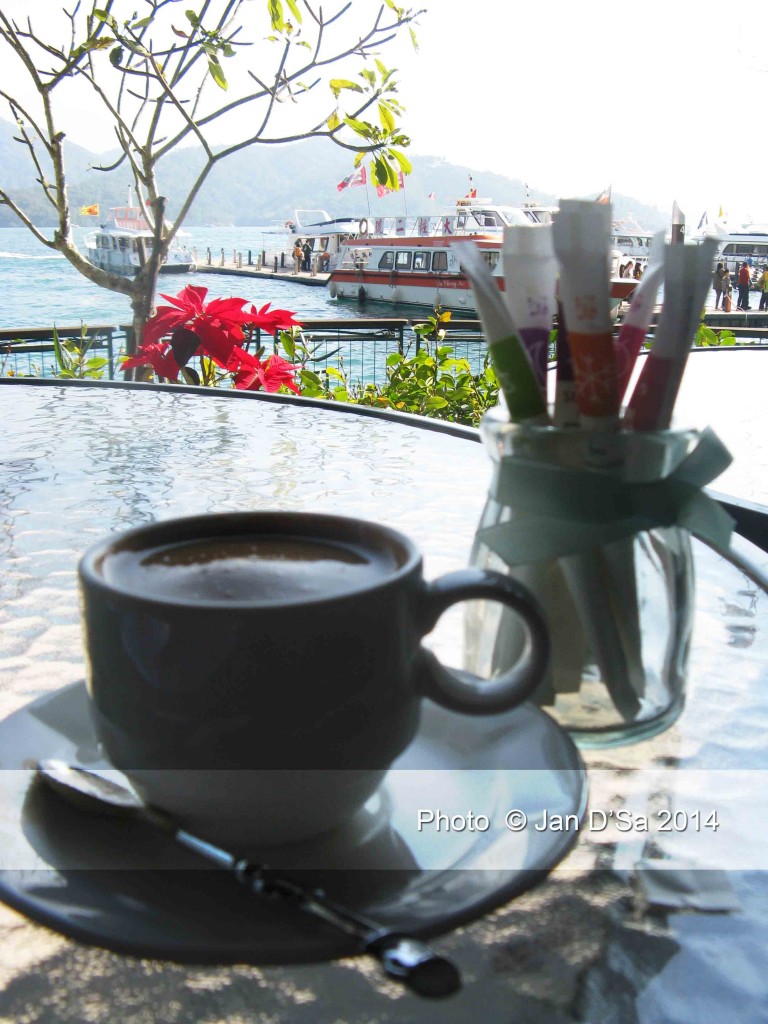
I should have tasted the Assam tea, but I needed my coffee adrenaline! Facing the beautiful view of the mountains and the river from Juniper Cafe.
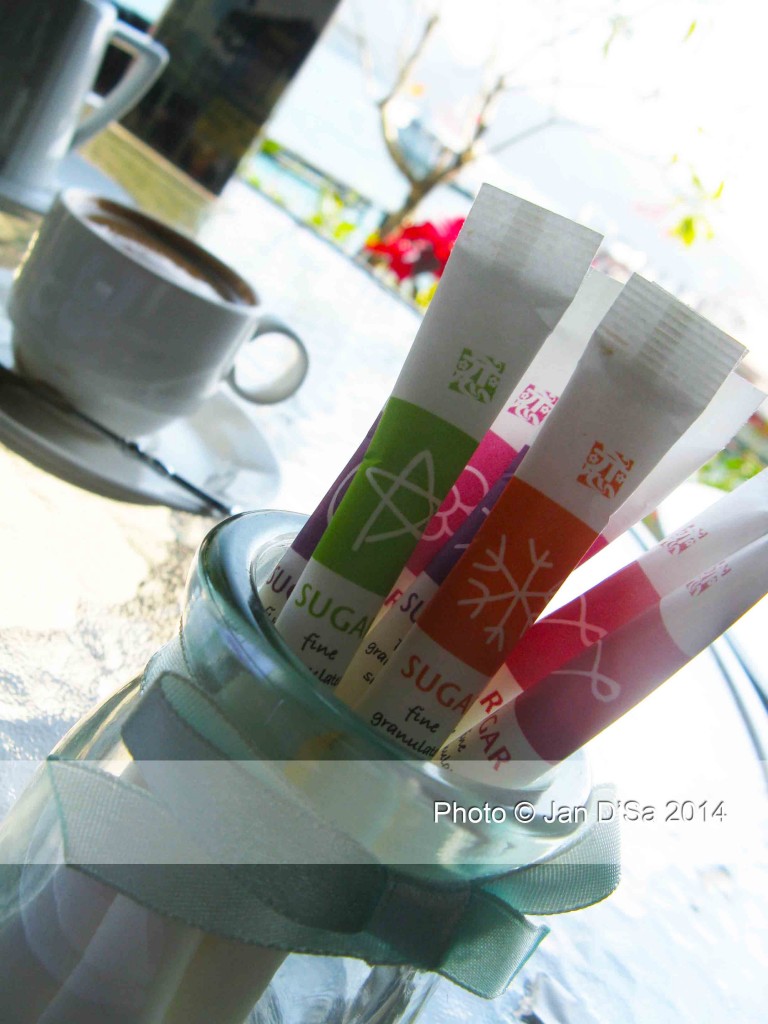
I’ve never seen sugar sachets of the same brand in different colours. I believe, you can print one design in different colours for real great prices in Taiwan.

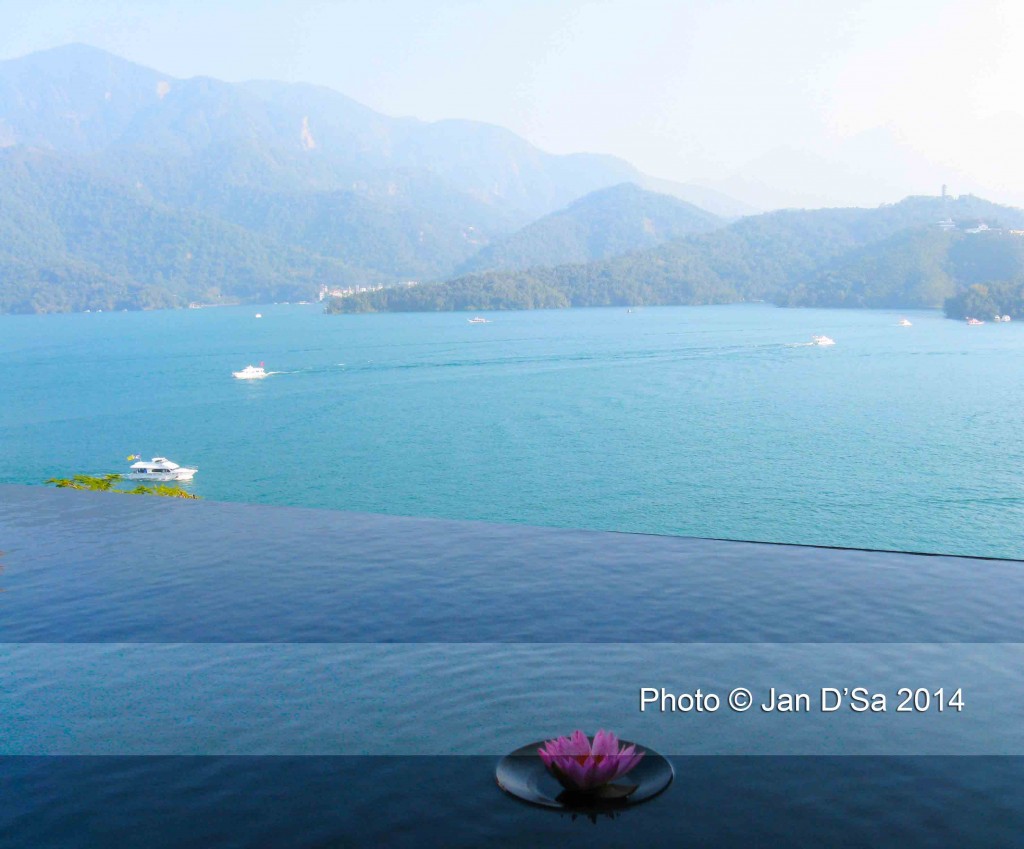
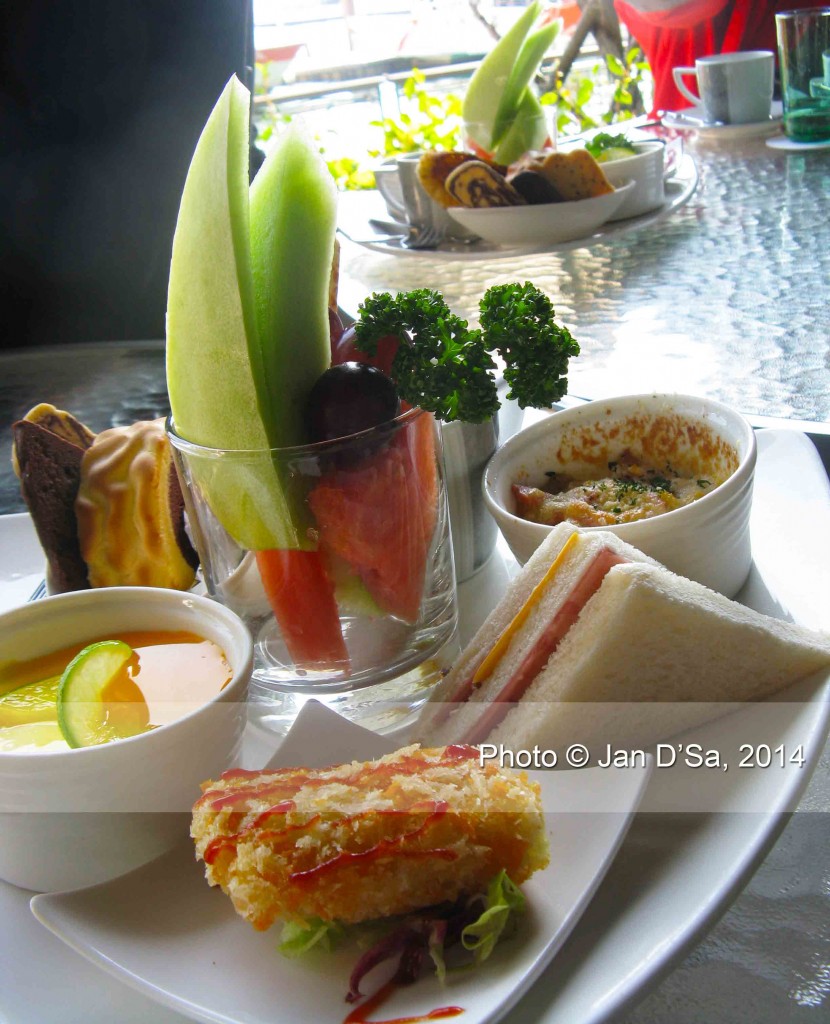
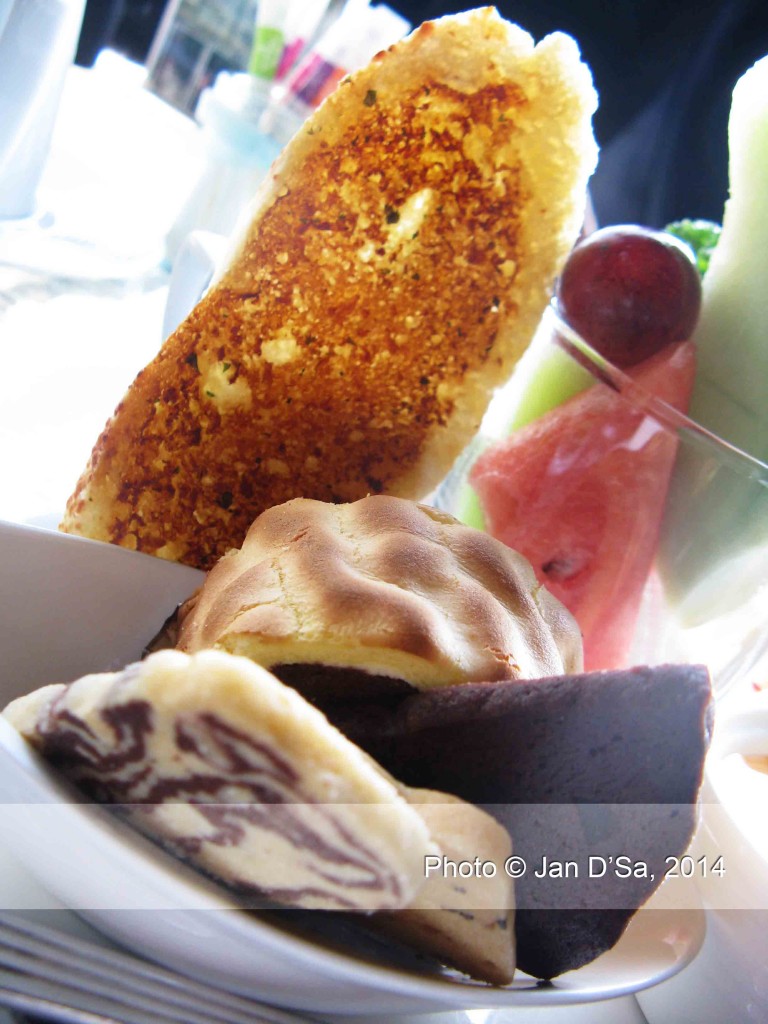
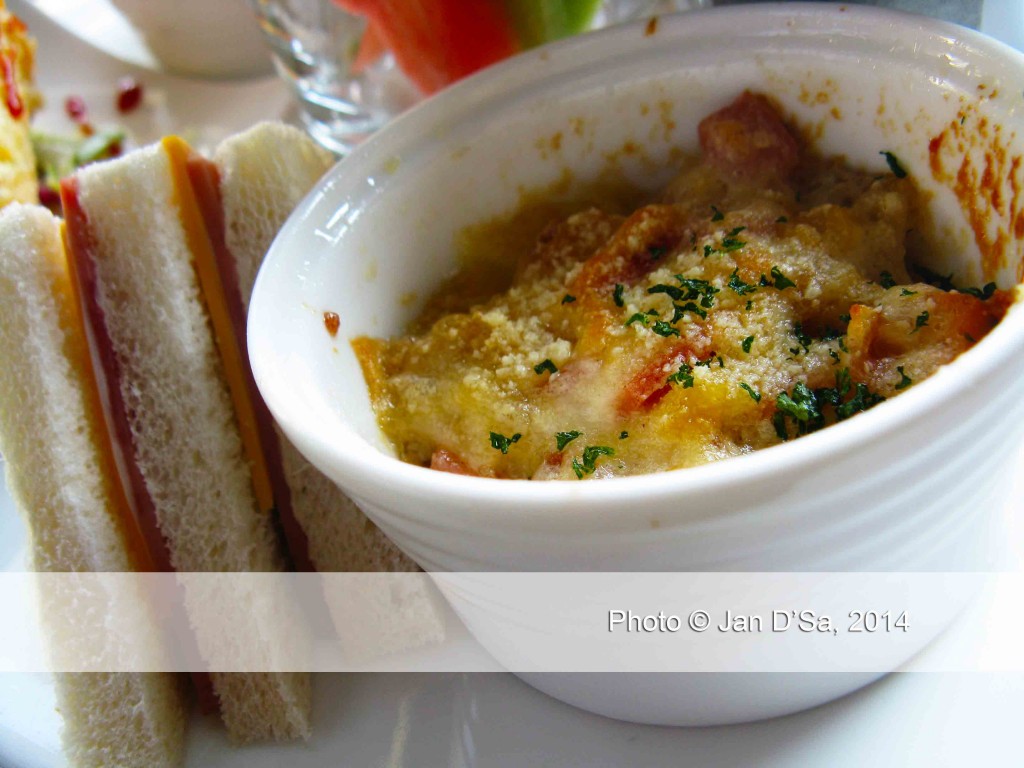
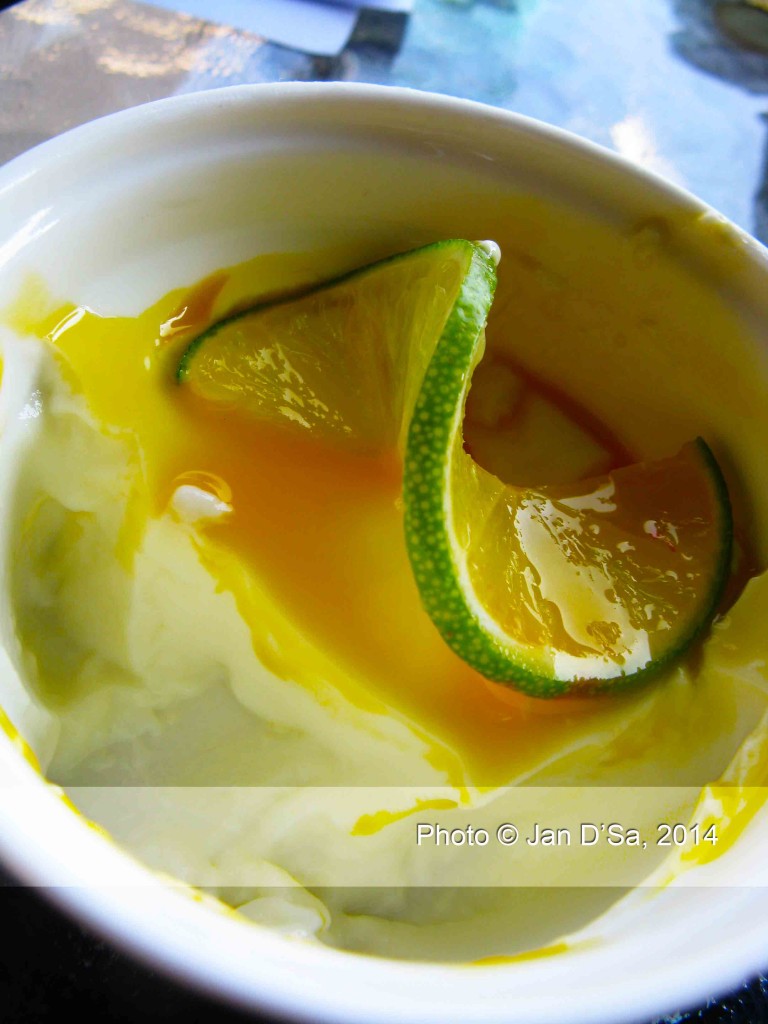
Lovely, reminds us that there is more to city life, shopping malls and the like.
Ideally, a trip to the countryside ought to be on peoples itineries.